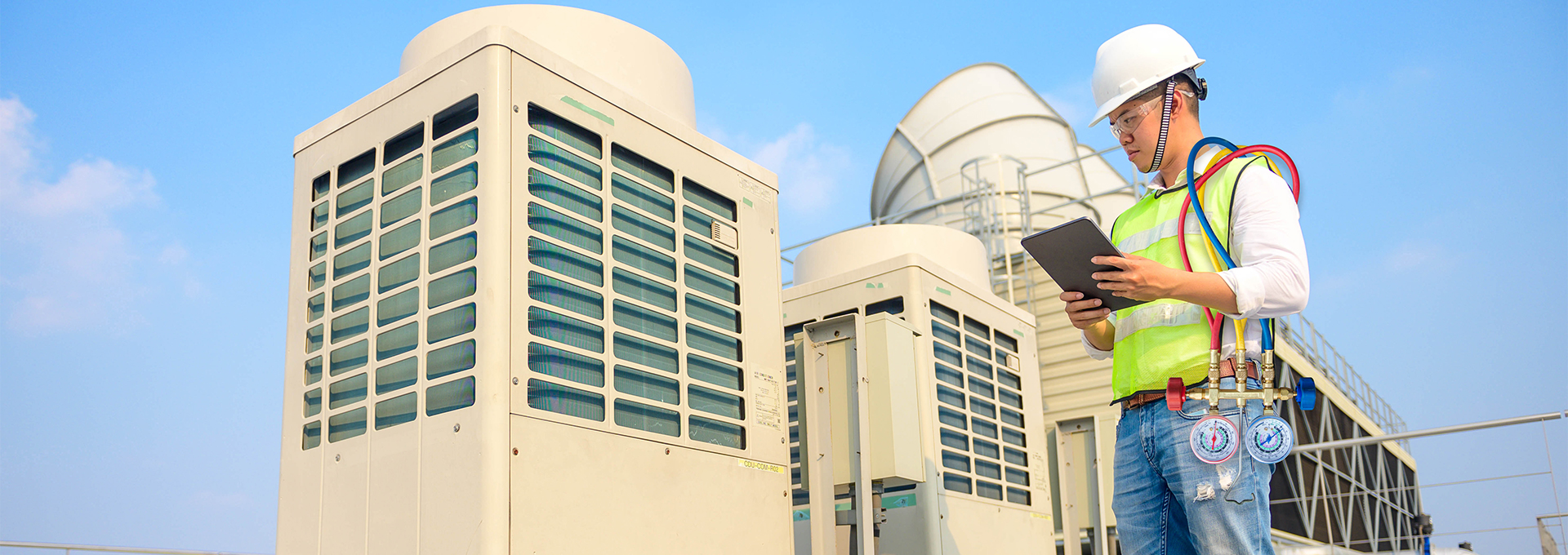Residential Air Conditioning – Evolution and Trends


Further on, especially when first split air conditioners came out, the thermostat became the most important part of an air conditioning control system. Basic electrical components, required for air conditioning parts operation (such as fans and compressors), were mounted inside the air conditioner. All the operation logic, energy efficiency algorithms, operation schedules, etc., were developed and implemented in the Thermostat, which had become the "brain" of the air conditioning systems.
The first thermostats were simple mechanical type ones, based on bimetals. They provided basic functionality, such as On/Off mode, set point temperature, operation mode, and fan speed - utilizing simple buttons, toggles, and control "wheels". The rapid demand for more sophisticated control, scheduling functions and a "nicer look" had enhanced the development of digital thermostats of various kinds, providing wide functionality, touch screen capabilities, scheduling, and more.
The latest market demand was now "connecting residential air conditioners to home automation systems", which led to communicating thermostats that integrate with Home Automation systems by wired or wireless communication.
The bottom line: any traditional, old air conditioning system can be easily "renovated" by simply adding a smart thermostat. Those smart thermostats from different companies can be matched to different HVAC brands, while enabling the integration of those HVAC systems with Home Automation systems.
The increasing demand for saving energy led to the development of new technologies in the HVAC industry, such as inverter based compressor. This technology allows compressor (which is the "heart" of the air conditioning system) to work proportionally, regulating the amount of refrigerant in the HVAC system, which leads to more "accurate" climate control and eventually - to reduced power consumption.
The inverter based technology compressor requires more sophisticated control, involving frequency modulation, DC conversion, and more. In order to support that, larger electronic PCBs (Printed Circuit Boards) that had to include all the relevant electronic components are now mounted inside the HVAC units (indoor, outdoor or both). The control flow is now totally different.
The Electronic PCB is now an active controller. It gathers all the data from the different inputs: temperature and pressure data from the built-in sensors, outdoor temperature, user input; and based on that, it defines how the HVAC system should work to fulfill those demands.
The traditional "Thermostat" as a concept is now simplified to a simple control panel that is only required to "learn" the user's climate demand, in terms of: operation state (On/Off), operation mode (cool/heat/dry), set point temperature, and the desired fan speed.
The user input can be transferred to the HVAC unit in several ways:
As the initial philosophy of those HVAC manufacturers was to provide all customers' needs for control, integration of such air conditioning unit with home automation and building management systems (BMS) became a more complicated task.
The variety of HVAC manufacturers and models has created a situation in which each is requiring a specific approach and different integration process. As this task wouldn't be the main priority of the HVAC manufacturers, it is clear that there would be a need for 3rd party integration platform, to make those HVAC units communicate fully with Home Automation/Building management systems.
Summarizing all up, we can now assume what is going to happen next.
In the near future, there is an obvious space for "smart" and communicating thermostats. Those thermostats will continue to develop and their numbers will grow, as "traditional" types of residential systems are still manufactured and sold. There is also a growing retrofit market they can fit into.
However, in the long run, as HVAC manufacturers will implement the inverter technology more and more, the demand for external thermostats (as they are now) will decrease, as the manufacturers will provide their own control panels. The HVAC operation logic will be built in as part of the HVAC control system, while companies will compete on "look" and design of the user data input to those HVAC systems.